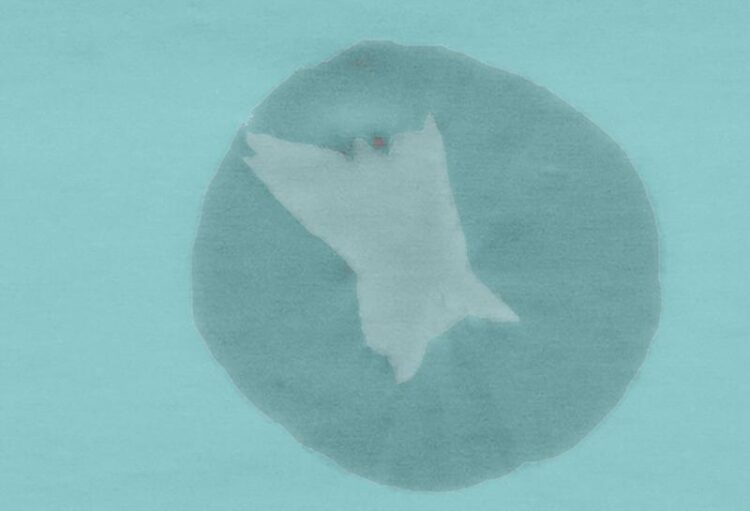On the track of fast phase transformations

Scanning electron microscope image of a copper-zirconium-aluminium metallic glass-crystal composite showing the CuZr B2 (spheroid)/Cu10Zr7 (dendrite) crystalline phases in a glassy matrix.
IFW Dresden
Phase transformation mechanisms and kinetics of a metallic glass defined over a wide temperature range.
Metallic glasses are metastable materials characterised by special atomic arrangement and properties. They are generally harder, more corrosion resistant and stronger than ordinary metals. Their amorphous structure is formed when natural crystallisation is prevented. This can be achieved, for example, by rapidly cooling the melt so that the atoms are deprived of mobility before they can adopt the crystal arrangement.
The reverse process – rapid heating of metallic glasses – gives access and control of the non-equilibrium states and structures with unique physical and mechanical properties, which cannot be obtained by conventional methods. However, due to the fast transformation kinetics, on the millisecond time-scale, in situ studies have always been challenging for materials scientists and physicists. Researchers have now succeeded in observing the phase transformations with high temporal resolution over the entire temperature range of the supercooled liquid’s existence.
In a recent paper published in Nature Communications, researchers report that they applied a combination of different and complementary techniques to study the phase transformations during rapid heating (annealing) of a copper-zirconium-aluminium glass. The structural studies have been carried out using in situ X-ray diffraction at PETRA III synchrotron source (DESY Hamburg) with the experimental setups for electromagnetic levitation and flash-annealing both constructed at IFW Dresden, and transmission electron microscopy at the University of Cambridge (UK).
The local microstructure was analyzed by atom probe tomography at MPIE Düsseldorf, and the surface chemistry was studied by Auger and X-ray photoelectron spectroscopy at IFW Dresden. Such a unique combination of experimental techniques provided hitherto inaccessible insight into the phase-transformation mechanism and its kinetics with high temporal resolution over the entire temperature range of the existence of the supercooled liquid. For the first time, the conditions under which the glass can form structures with beneficial materials properties are defined in situ. This approach can also be applied to map phase transformations in other metallic-glass-forming systems.
This work was financially supported by the Deutsche Forschungsgemeinschaft (DFG) under grants KA 3209/9-1 (I. Kaban, IFW Dresden) and HE 7225/1-1 (M. Herbig, MPIE Düsseldorf).
The paper is featured as Editor’s Highlights in Materials Science and Chemistry (listing the top 50 papers published recently in Nature Communications) https://www.nature.com/collections/eecgdgijhh
Wissenschaftliche Ansprechpartner:
Dr. Ivan Kaban
Phone: +49 (0) 351 4659-252
E-Mail: i.kaban(at)ifw-dresden.de
Originalpublikation:
J. Orava, S. Balachandran, X. Han, O. Shuleshova, E. Nurouzi, I. Soldatov, S. Oswald, O. Gutowski, O. Ivashko, A.-C. Dippel, M. v. Zimmermann, Y.P. Ivanov, A.L. Greer, D. Raabe, M. Herbig & I. Kaban, In situ correlation between metastable phase transformation mechanism and kinetics in a metallic glass, Nature Commun., 2021, Vol. 12, Article No. 2839; DOI: https://doi.org/10.1038/s41467-021-23028-9
Weitere Informationen:
Media Contact
All latest news from the category: Materials Sciences
Materials management deals with the research, development, manufacturing and processing of raw and industrial materials. Key aspects here are biological and medical issues, which play an increasingly important role in this field.
innovations-report offers in-depth articles related to the development and application of materials and the structure and properties of new materials.
Newest articles

Innovative 3D printed scaffolds offer new hope for bone healing
Researchers at the Institute for Bioengineering of Catalonia have developed novel 3D printed PLA-CaP scaffolds that promote blood vessel formation, ensuring better healing and regeneration of bone tissue. Bone is…

The surprising role of gut infection in Alzheimer’s disease
ASU- and Banner Alzheimer’s Institute-led study implicates link between a common virus and the disease, which travels from the gut to the brain and may be a target for antiviral…

Molecular gardening: New enzymes discovered for protein modification pruning
How deubiquitinases USP53 and USP54 cleave long polyubiquitin chains and how the former is linked to liver disease in children. Deubiquitinases (DUBs) are enzymes used by cells to trim protein…



